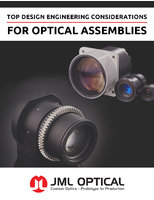RFID Helps Holt Cat Keep Tabs on Tools
May 11, 2007-Heavy equipment and service provider Holt Cat has implemented an RFID system designed to track tools at its Irving, Texas, location. The company says it has seen a savings of about $10,000 a month by eliminating the loss of its tools, as well as the time lost looking for those tools. It has also reduced the incidence of missed jobs stemming from such tool loss.
The Irving site includes a tool room containing about 17,000 items, ranging from drill bits to 50-ton presses. Until several years ago, the company used a pad of paper and pencil to track any tools that left the tool room for the shop floor or were sent out into the field to build or repair equipment. The 70 shop technicians and 65 field technicians wrote their names and the items they were taking, as well as the times they returned those items. However, says Mark Pavuk, Holt Cat's service assets supervisor, that system broke down whenever technicians failed to record the tools they took.
Mark Pavuk
Holt Cat moved to a bar-coding system in which technicians scanned a tool's bar-coded label before removing it from storage. That, Pavuk notes, did not work well either, since the scans often were simply not performed. Thus, in September 2006, Pavuk contacted SAVR Communications for an RFID-based solution. Holt Cat installed the RFID system in March and has since been testing a variety of 915 MHz EPC Gen 2 passive tags on tools-usually more than one on each tool, in case a technician is holding a hand over a tag-as well as a configuration of six antennas at the portal where technicians enter and leave.
Each technician wears an ID badge containing a passive13.56 MHz RFID tag that complies with the ISO 15693 standard. As an employee enters the portal, SIRIT reader antennas capture the person's identification and any tools he may be returning. When the technician leaves with tools, the 915 MHz tags-which have a 2-foot read range-are read along with the RFID badge, associating that employee with those tools in the system.
If another employee seeks that tool, information as to who has it is automatically routed through a cabled connection to Holt Cat's database. Holt Cat uses AccuTracker software to manage its tools, and the SAVR system integrates directly with that software.
"Another side benefit [to the RFID system] is that it allows us to see tool usage and see if we need additional tools," Pavuk says. He forecasts that the installation in Irving alone will save Holt Cat about $300,000 per year, in excess purchases made when tools cannot be located. The first installation cost the company approximately $70,000.
In addition, Pavuk says, the system provides technician accountability-and thus far, the technicians like it. "I had someone pick up five tools and walk out," he recalls, adding that the technician was impressed to see the portal pick up every single tool. "He thought that was great."
Pavuk has been using Alien Technology Squiggle tags, as well as Plexiglas-backed tags from several other vendors. The tags are effective despite rugged use, he says, such as heavy washing and vibrations.
According to Pavuk, the next installation will take place at the San Antonio tool room, where he intends to begin testing this month. Eventually, he hopes to have all 16 tool rooms at Holt Cat-which hold a total of $20 million worth of tools-to be RFID-enabled




